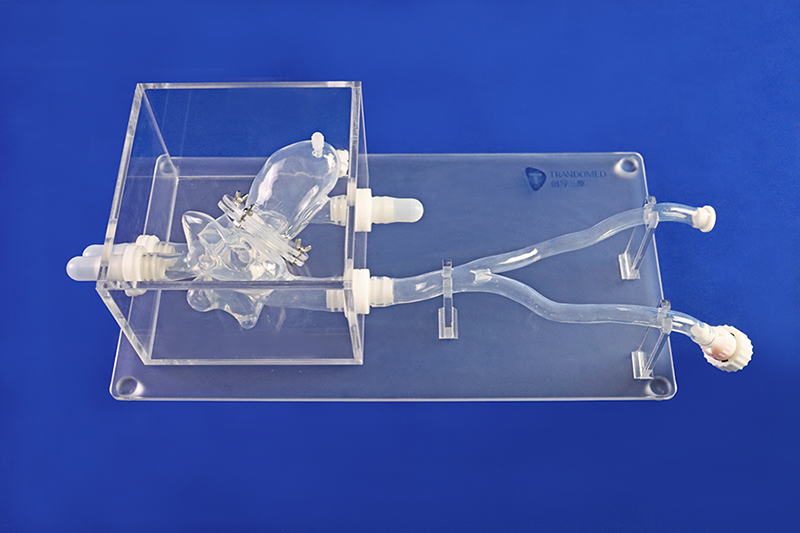The mitral valve is like a "one-way valve" of the heart, ensuring that blood circulation flows in a certain direction and passes a certain flow rate. Therefore, the requirement for the valve function is to "open + close".
Main lesions of mitral valve
1. Mitral valve stenosis, which is similar to a narrow valve in a water pipe, prevents blood from being pumped smoothly from the heart to the body , causing symptoms such as difficulty breathing.
2. Mitral valve insufficiency, which is similar to water pipe gate hand damage and deformation, the joints are fused and shortened, and cannot close normally, thus affecting the dynamics of blood flow. Common symptoms include: labor-related dyspnea, fatigue, and sitting upright. Breathing and activity tolerance are significantly reduced.
3. Mitral valve prolapse syndrome, also known as Barlow syndrome, is similar to a water pipe gate that will loosen or shake when used, resulting in changes in hemodynamics.
Mitral valve surgery types
If symptoms are obvious and cardiac function is affected, surgery should be performed promptly. There are currently two main types of surgical methods:
1. Mitral valve repair and valvuloplasty, which uses the patient's own tissue and some artificial substitutes to repair the mitral valve and restore its function.
2. Mitral valve replacement surgery involves removing the mitral valve leaflets and chordae tendineae, and suturing and fixing the artificial valve to the valve annulus. It is generally suitable for patients with severely damaged mitral valves who are not suitable for valve repair surgery.
For surgical treatment of patients with mitral valve disease, it is necessary to consider the indications and timing of surgery, and changes in surgical treatment methods.
Fundamentally affects the overall medical strategy for valvular heart disease.
Indications for surgery for both
Mitral valve disease will lead to a gradual decline in left ventricular function. As the left ventricular function declines, the heart as a whole is gradually unable to compensate for the reduced function. The left ventricle gradually enlarges, and the patient's symptoms worsen, and exertional dyspnea may occur. In severe cases, sitting upright may occur. Respiration, paroxysmal nocturnal dyspnea, acute pulmonary edema, eventually leading to pulmonary hypertension and right heart failure. Patients should undergo surgery promptly. Clinical symptoms, left ventricular size and left ventricular function are the deciding factors in considering surgery. If mitral valvuloplasty is considered, the surgery should be performed as early as possible. If mitral valve replacement surgery is planned, considering the complications of the artificial valve, the surgery can be performed until the patient develops left ventricular dysfunction; for pediatric patients, mitral valvuloplasty should be performed Surgery is the main method; for elderly patients over 60 years old, women who want to have children, and patients with difficulty in anticoagulation, biological valve replacement should be the main method; for young and middle-aged patients, the surgical method should be determined based on the patient's disease conditions.
The surgical effects of the two and their impact on lifespan
Whether to repair or replace the mitral valve has a considerable impact on the patient's lifespan. If the mitral valve can be successfully repaired, the patient's lifespan is no different from that of normal people of the same age. However, if the mitral valve is replaced, whether a biological valve or a mechanical valve is used, the patient's life span will be very different from that of normal people. The incidence of long-term complications and mortality after mitral valve repair are significantly lower than those of mitral valve replacement, and the long-term survival rate is higher. One study compared the survival of patients ten years after mitral valve repair versus replacement. The life expectancy of patients with mitral valve repair is basically the same as that of normal people, but the ten-year survival rate of patients with mitral valve replacement is about 20% lower than that of patients with mitral valve repair. In other words, if you are a patient who has your mitral valve replaced, your probability of being alive ten years later is 20% lower than if you had your mitral valve repaired.
For patients with mitral valve disease, doctors should try to repair the mitral valve. Mitral valve replacement is only a measure taken when repair cannot be satisfactorily performed. Replacing the mitral valve does not completely solve the problem. If a biological valve is used, the probability of reoperation is very high because the biological valve will be damaged; even if a mechanical valve is used, the probability of reoperation is about 10%. For young patients with a long expected survival time, many reoperations cannot be avoided. In contrast, reoperation rates after mitral valve repair are not high. Even if reoperation is required, patients' quality of life between surgeries is better than that of patients who have had their mitral valve replaced.
